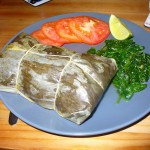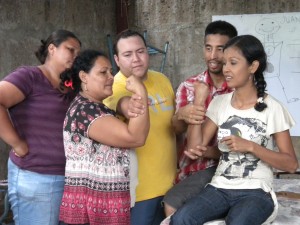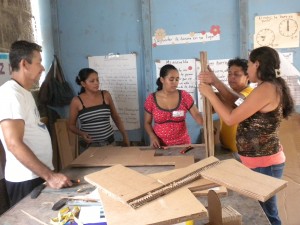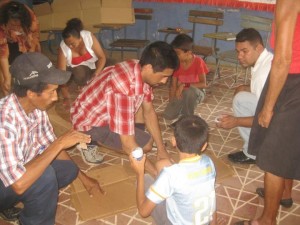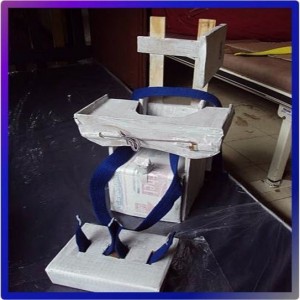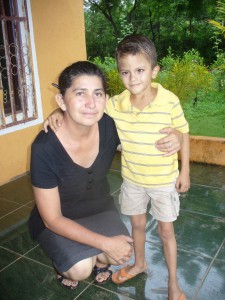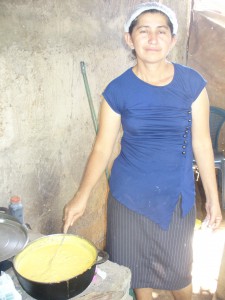Nicaragua Delegation Notes, by David Ment
/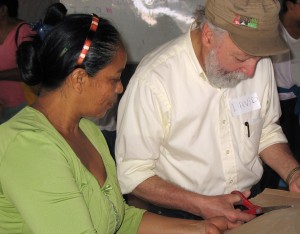 It was a great privilege and opportunity to travel with the Dos Pueblos delegation and visit the communities of Tipitapa. The trip overall was a success due to its careful planning, and also due to the wonderful group of people on it: Lupe, Helen, Sarah, Amy, Steve, Paul; I learned much from everybody.
The citizens of Tipitapa were amazingly open to showing us their successes, problems, and living conditions. This must reflect both their positive and cooperative attitudes and also the long-term intensive work of Rosa and others in building confidence and relationships. People like Marina and Estela were unbelievable in their dedication and it was an honor to meet them.
It was a great privilege and opportunity to travel with the Dos Pueblos delegation and visit the communities of Tipitapa. The trip overall was a success due to its careful planning, and also due to the wonderful group of people on it: Lupe, Helen, Sarah, Amy, Steve, Paul; I learned much from everybody.
The citizens of Tipitapa were amazingly open to showing us their successes, problems, and living conditions. This must reflect both their positive and cooperative attitudes and also the long-term intensive work of Rosa and others in building confidence and relationships. People like Marina and Estela were unbelievable in their dedication and it was an honor to meet them.
The first days revolved around water projects, and I gradually came to appreciate the careful way our community visits proceeded. We started in Via Japon where the pump was turned by hand and buckets were carried by hand or on the head. We visited communities where handcarts and burros took over the task of carrying, where the pumps were electrified, and ultimately, where the electric pumps fed networks of plastic pipes to bring the water to each home.
Among the key elements for the water projects’ success seem to be the continuing commitment of the community; the creation of committees with a structure to support water planning and assessments; the backup of that structure with the formal CAPS legislation and staff; the ongoing coordination, encouragement, and monitoring by Rosa, which helps keep community members positive; the physical task of infrastructure construction at this level, supported by CAPS; and the ability of Dos Pueblos to provide financial resources where needed. That last sentence is a bit long. But maybe that is the message: you need all of those elements to make real permanent community progress. It has clearly taken years of hard work by Dos Pueblos, both by folks in NYC and Tipitapa, to reach this stage.
In Ciudadela San Martin, the little children’s library was a gem. It is a model of practical community self-help that can be readily replicated. Essential is the heartfelt adoption of the project by a volunteer librarian, and providing books is a natural for partners like Dos Pueblos. A step for the future could be to partner with an educator or librarian from the university or other agency who could select books that can be purchased in Managua and thus avoid international shipping.
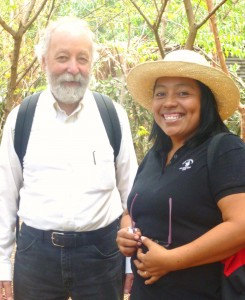 In the same community we also visited a health clinic, which was part constructed by Dos Pueblos. The nurse was very clear in suggesting that planning and management could be improved (for example the seemingly random staff turnover, carried out by the Ministry of Health and a continuous problem for Dos Pueblos in trying to develop long-term relations here). It was often hard to sort out the overlapping problems of a shortage of health centers and transportation in such rural communities. At times, I recall feeling that problems raised in the communities could be solved by effective transport to medical services; perhaps an “access-a-ride” service would produce the greatest improvement in access to care.
In the same community we also visited a health clinic, which was part constructed by Dos Pueblos. The nurse was very clear in suggesting that planning and management could be improved (for example the seemingly random staff turnover, carried out by the Ministry of Health and a continuous problem for Dos Pueblos in trying to develop long-term relations here). It was often hard to sort out the overlapping problems of a shortage of health centers and transportation in such rural communities. At times, I recall feeling that problems raised in the communities could be solved by effective transport to medical services; perhaps an “access-a-ride” service would produce the greatest improvement in access to care.
Perhaps the most emotionally wrenching project was the special education class: the attempt by volunteer Estela to teach kids with a broad range of disabilities, many of which were serious. More impressive to me was the level of support she was receiving from so many members of the community – the willingness of so many people to spend two days at our workshop really struck me. Looking to the future of this new project however, I think it now needs some of the support elements that the water projects had: formal recognition, technical and political support, linkages with medical services, and of course financial support.
I guess I end where I began. It was such an honor to meet the people of these communities who are making such an effort to build from such a difficult starting place.


 After working closely with Physical Therapist Andrew Suseno to provide workshops on adaptive design and basic rehabilitation in Tipitapa, our Board of Directors was eager to learn more about how cardboard, a ubiquitous material worldwide that is very strong and highly versatile, could be used to improve lives.
So when we were all invited to visit New York-based organization
After working closely with Physical Therapist Andrew Suseno to provide workshops on adaptive design and basic rehabilitation in Tipitapa, our Board of Directors was eager to learn more about how cardboard, a ubiquitous material worldwide that is very strong and highly versatile, could be used to improve lives.
So when we were all invited to visit New York-based organization 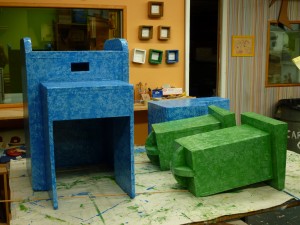 Within the hour, most of us had made a box out of cardboard, the only rule being that the box could not be four sided. The chairs, stools, tables and cardboard educational tools around us started to make sense as we learned how to seal any gaps, make curved edges, and increase the strength. A coat of Primer and then paint further secure the cardboard structures from deteriorating over time or water damage, creating a durable, colorful, fun piece of equipment. We will be showing some of these at
Within the hour, most of us had made a box out of cardboard, the only rule being that the box could not be four sided. The chairs, stools, tables and cardboard educational tools around us started to make sense as we learned how to seal any gaps, make curved edges, and increase the strength. A coat of Primer and then paint further secure the cardboard structures from deteriorating over time or water damage, creating a durable, colorful, fun piece of equipment. We will be showing some of these at 
